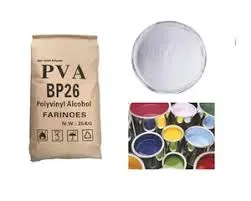The Advantages of HPMC Powder in Tile Adhesives
In the construction and tiling industries, the choice of adhesive plays a critical role in the durability and effectiveness of tile installations. One of the most noteworthy advancements in this field is the use of Hydroxypropyl Methylcellulose (HPMC) powder in tile adhesives. This innovative material has gained significant traction due to its unique properties, which enhance the performance of adhesives for various applications, particularly in tiling.
HPMC is a cellulose ether derived from natural cellulose and is recognized for its versatility in a variety of formulations. When incorporated into tile adhesives, HPMC powder offers several advantages that can significantly improve the installation process and the longevity of tiles.
Enhanced Workability
One of the primary benefits of using HPMC powder in tile adhesives is its ability to improve workability. When added to the adhesive mixture, HPMC increases the viscosity and consistency of the mortar, making it easier to apply. This is especially important for tilers, as it allows for better control during application, reducing the risk of slippage and ensuring that the tiles adhere properly to the substrate.
Extended Open Time
In tiling applications, the working time is crucial. HPMC enhances the open time of tile adhesives, allowing installers to work at a more leisurely pace without the adhesive drying out too quickly. This extended open time enables tilers to make adjustments as needed, ensuring precise alignment and proper adhesion of tiles.
Water Retention Properties
hpmc powder tile adhesives

Another significant advantage of HPMC powder is its excellent water retention properties. HPMC helps to retain moisture in the adhesive, which is vital for the curing process. This ensures that the adhesive maintains its bonding strength over time, providing a robust connection between the tile and substrate. The moisture retention also prevents the adhesive from drying too rapidly, which can lead to cracks or other issues.
Improved Adhesion
HPMC contributes to enhanced adhesion properties of the tile adhesive. It forms a gel-like structure when mixed with water, improving the overall bonding strength between the adhesive and the tiles. This reliable adhesion is crucial, particularly in areas prone to moisture, such as bathrooms and kitchens, where tiles are regularly subjected to wet conditions.
Environmental Benefits
With the growing emphasis on sustainable building practices, HPMC powder also stands out due to its environmentally friendly properties. Being derived from natural cellulose, it is biodegradable and poses fewer risks to health and the environment compared to some synthetic additives. This aligns with the industry's shift towards greener products and sustainable building materials.
Conclusion
In summary, HPMC powder has revolutionized the formulation of tile adhesives, providing significant benefits in terms of workability, open time, water retention, adhesion, and environmental sustainability. As the construction industry continues to evolve, the incorporation of advanced materials like HPMC is paving the way for more efficient and durable tile installations. Whether for residential or commercial projects, HPMC-enhanced tile adhesives represent a smart choice for modern tiling solutions.
-
Rdp Powder: Key Considerations for Wholesalers in the Building Materials IndustryNewsJul.08,2025
-
Key Considerations for Wholesalers: Navigating the World of Hpmc - Based ProductsNewsJul.08,2025
-
Hpmc Detergent: Key Considerations for WholesalersNewsJul.08,2025
-
Key Considerations for Wholesalers: China Hpmc For Tile Adhesive, Coating Additives, Concrete Additives, and MoreNewsJul.08,2025
-
Crucial Considerations for Wholesalers: Navigating the World of Construction MaterialsNewsJul.08,2025
-
Key Considerations for Wholesalers Sourcing Additive For Cement, Additive For Concrete, Additive For Putty from Additive Manufacturer Shijiazhuang Gaocheng District Yongfeng Cellulose Co., Ltd.NewsJul.08,2025




